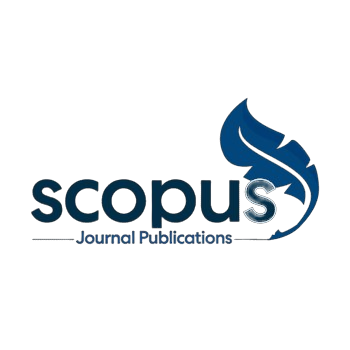In the world of academia, the dissemination of research findings is crucial for the advancement of knowledge and the progress of various fields. Journal editing plays a pivotal role in this process, ensuring that academic publications meet the highest standards of quality, clarity, and credibility. This article explores the importance of journal editing, its impact on the publication process, and the benefits it offers to authors, readers, and the academic community as a whole.
The Role of Journal Editing
1. Ensuring Accuracy and Clarity
Journal editing involves a meticulous review of manuscripts to ensure accuracy and clarity. Editors scrutinize the content for errors in grammar, punctuation, spelling, and formatting, making necessary corrections to enhance readability and coherence.
- Grammar and Syntax: Editors correct grammatical errors and improve sentence structure, ensuring that the manuscript is grammatically sound and easy to understand.
- Consistency: Editing ensures consistency in terminology, style, and formatting, which is essential for maintaining the integrity and professionalism of the publication.
- Clarity: Editors help authors articulate their ideas clearly, removing ambiguities and ensuring that the message is conveyed effectively to the readers.
2. Enhancing Credibility
The credibility of an academic publication is paramount, and journal editing plays a significant role in achieving this. By thoroughly reviewing and refining the manuscript, editors help establish the work’s credibility and reliability.
- Fact-Checking: Editors verify the accuracy of data, references, and citations, ensuring that the information presented is correct and reliable.
- Ethical Standards: Editors ensure that the manuscript adheres to ethical standards, including proper citation practices, avoiding plagiarism, and maintaining academic integrity.
- Peer Review: Editors facilitate the peer review process, where experts in the field evaluate the manuscript’s quality, validity, and originality, further enhancing its credibility.
3. Improving Manuscript Quality
Journal editing significantly improves the overall quality of the manuscript, making it more likely to be accepted for publication and widely read by the academic community.
- Structural Editing: Editors provide feedback on the organization and structure of the manuscript, suggesting improvements to enhance its logical flow and coherence.
- Content Editing: Editors review the content for relevance, depth, and completeness, recommending additions or deletions to strengthen the manuscript’s argument and impact.
- Language Polishing: For non-native English-speaking authors, journal editing offers language polishing services to ensure that the manuscript meets the linguistic standards of the target journal.
The Impact of Journal Editing on the Publication Process
1. Facilitating the Review Process
Well-edited manuscripts are more likely to receive positive feedback from reviewers, expediting the review process and increasing the chances of acceptance for publication.
- Reviewer Friendly: Clear and well-organized manuscripts are easier for reviewers to evaluate, leading to more constructive feedback and quicker decision-making.
- Reduced Revisions: By addressing potential issues during the editing process, the need for extensive revisions is minimized, saving time for both authors and reviewers.
2. Increasing Acceptance Rates
High-quality editing can significantly increase the acceptance rates of manuscripts, as journals prefer to publish well-prepared and polished papers.
- Professional Presentation: A professionally edited manuscript demonstrates the author’s commitment to quality, making a positive impression on journal editors and increasing the likelihood of acceptance.
- Compliance with Guidelines: Editors ensure that the manuscript adheres to the submission guidelines and formatting requirements of the target journal, reducing the risk of rejection due to non-compliance.
3. Enhancing Dissemination and Impact
A well-edited journal article is more likely to be read, cited, and disseminated widely, contributing to the author’s academic reputation and the advancement of knowledge in the field.
- Readability: Improved readability makes the article accessible to a broader audience, including researchers, practitioners, and policymakers.
- Citations: High-quality articles are more likely to be cited by other researchers, increasing the author’s citation count and academic impact.
- Visibility: Professionally edited articles are more likely to be featured in prominent journals and databases, enhancing their visibility and reach.
The Benefits of Journal Editing for Authors
1. Professional Development
Journal editing provides valuable feedback to authors, helping them improve their writing skills and enhance their professional development.
- Constructive Feedback: Editors offer constructive feedback on writing style, structure, and content, enabling authors to refine their manuscripts and enhance their academic writing skills.
- Learning Opportunity: The editing process serves as a learning opportunity for authors, allowing them to understand the standards and expectations of academic publishing.
2. Increased Confidence
Authors can submit their manuscripts with increased confidence, knowing that they have been thoroughly reviewed and refined by professional editors.
- Reduced Anxiety: The support of professional editors reduces the anxiety associated with the submission process, giving authors peace of mind that their work meets the required standards.
- Positive Perception: Well-edited manuscripts are perceived more positively by journal editors and reviewers, boosting authors’ confidence in their research and writing.
3. Time Savings
Journal editing saves authors time by streamlining the manuscript preparation process and reducing the need for extensive revisions.
- Efficiency: Editors handle the time-consuming tasks of proofreading, formatting, and fact-checking, allowing authors to focus on their research and other responsibilities.
- Quick Turnaround: Professional editing services offer quick turnaround times, helping authors meet submission deadlines and expedite the publication process.





Comments